Ant gardens of Camponotus irritabilis and Hoya elliptica in Southeast Asia
Camponotus irritabilis (Formicidae: Formicinae) and Hoya elliptica (Apocynaceae) have a close association in ant gardens in Malaya and Sumatra. The ants selectively retrieve the seeds of their epiphyte partners, and they fertilize their carton nests on which the plants are growing. In their paper “Ant gardens of Camponotus (Myrmotarsus) irritabilis (Hymenoptera: Formicidae: Formicinae) and Hoya elliptica (Apocynaceae) in Southeast Asia” published in Asian Myrmecology, Andreas Weißflog, Eva Kaufmann, and Ulrich Maschwitz reveal different aspects of this association.
A Photoblog contribution compiled by Andreas Weißflog 
(a) Free cross section through matured Camponotus irritabilis nest (volume: 11.494 cm³). In the centre (Area I, ca. 17 x 15 cm), very few epiphyte roots penetrated deeply black, paper-like materials. (b) An undetermined fungus that was only found in this area of the nest caused the colour. Area II was characterized by a dense network of roots structuring the walls (up to 2.2 cm thick) and irregularly shaped chambers. Almost no carton material was found between the roots in this part of the nest. Area III, the growing area of the nest, consisted of one layer of smaller chambers with thinner walls (0.3 – 0.5 cm) that was covered with a layer of building material penetrated by young roots of Hoya elliptica. (© Andreas Weißflog)

Development of Camponotus irritabilis ant garden. (a) Nest walls were built by the workers around a branch. (b) A spherical pavilion was constructed from soil and wooden particles (3 x 2 cm). The settlement of Hoya elliptica in the nests of C. irritabilis occurred in two ways (c, d): (c) Seeds incorporated during nest building germinated within two days. The seedling reached a length of 3.5 cm within 17 days, and the roots covered and penetrated the new nest material. (d) (1) Shoots of (2) matured H. elliptica with their origin in other nest buildings reached the new nest pavilion, and finally, small rootlets infiltrated the whole nest. The workers incorporated additional materials and nutrients (e.g., bird droppings, insect fragments) on the nest surface, which were penetrated by the roots and resulted in growing nests. (3) Built-in seeds of H. elliptica germinated within the nest. (4) The workers partly removed rootlets, formed chambers, and created nest entrances. (© Andreas Weißflog)

Ant garden of Camponotus irritabilis. The roots of the epiphytic H. elliptica completely intersected the outer regions of the nest. The plant continued to grow along the stem and branches, without developing further roots on the host tree surface. In this way, it reached other nutrient-rich new nest buildings, in which it then rapidly formed an extensive root system. Ant garden dimensions: 26 x 27 cm. (© Andreas Weißflog)

Camponotus irritabilis worker collected nutrients like bird droppings. (© Andreas Weißflog)
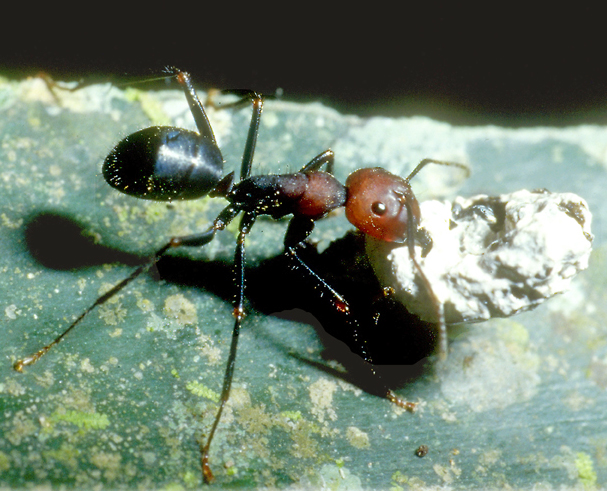
Camponotus irritabilis worker collected insect fragments (e.g., ant-head). (© Andreas Weißflog)
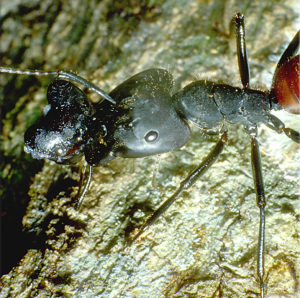
The nitrogen-rich plant nutrients were stored by the workers within the nest chambers and later were penetrated by the roots of Hoya elliptica. (© Andreas Weißflog)
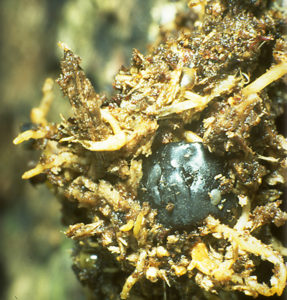


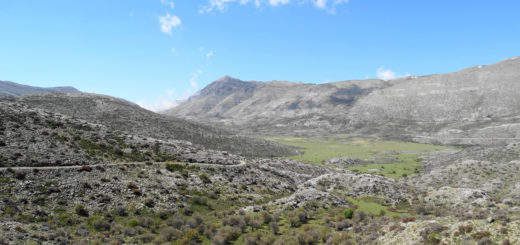
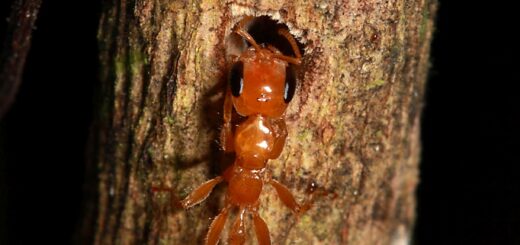

Recent Comments